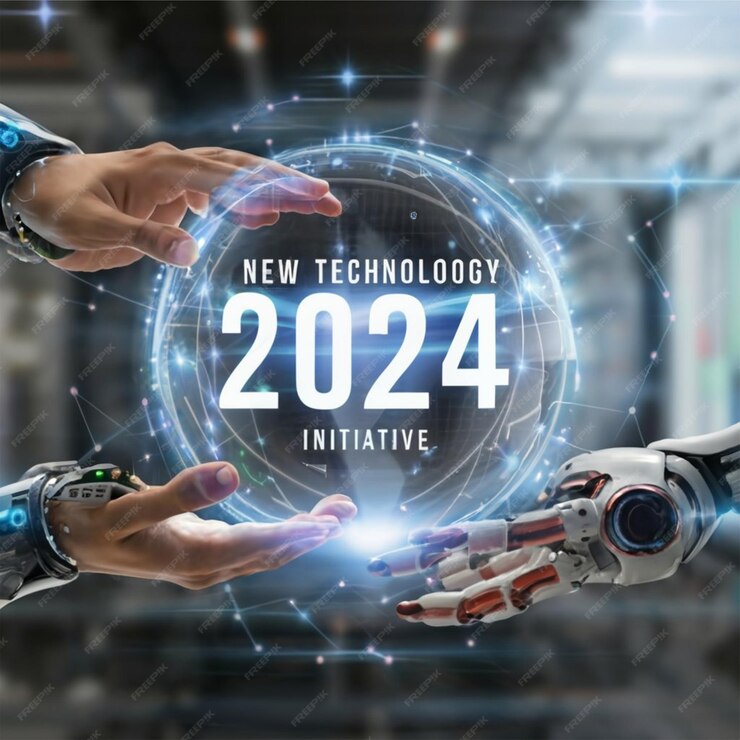In the grand tapestry of human innovation, few threads are as transformative and awe-inspiring as Artificial Intelligence (AI). Since its inception, AI has continually pushed the boundaries of what we thought possible, revolutionizing industries, shaping economies, and reshaping the very fabric of society. As we stand on the precipice of a new era, poised to delve deeper into the realms of technological advancement, the latest wave of AI technologies promises to propel us into uncharted territories of innovation and discovery.
At the forefront of this technological revolution are several groundbreaking advancements that are reshaping our understanding of AI and its potential applications. From deep learning to reinforcement learning, from natural language processing to computer vision, these innovations are not just incremental improvements but represent paradigm shifts in how AI systems are designed, trained, and deployed.
Introduced by Ian Goodfellow and his colleagues in 2014, GANs have gained widespread attention for their ability to generate synthetic data that is indistinguishable from real data. This breakthrough has far-reaching implications across various domains, from creating realistic images and videos to enhancing data augmentation techniques in machine learning pipelines.
Moreover, GANs have opened up new avenues in creative expression, enabling artists and designers to explore novel forms of digital art and multimedia. By harnessing the power of generative models, creators can now push the boundaries of imagination, generating artwork, music, and literature that transcends the limits of human creativity.
Another area of rapid advancement is the intersection of AI and healthcare. With the proliferation of medical data and the increasing complexity of diagnostic procedures, AI-driven solutions are revolutionizing healthcare delivery, diagnosis, and treatment. Deep learning algorithms trained on vast datasets are now capable of detecting diseases with a level of accuracy and speed that was previously unimaginable.
For instance, researchers are leveraging AI to analyze medical images such as X-rays, MRIs, and CT scans, aiding radiologists in detecting abnormalities and making more informed diagnoses. Similarly, natural language processing algorithms are being used to extract valuable insights from clinical notes, research papers, and patient records, enabling healthcare providers to deliver personalized care and streamline administrative tasks.
Furthermore, AI-powered virtual assistants and chatbots are reshaping the way patients interact with healthcare services, providing round-the-clock support, answering queries, and even offering preliminary medical advice. These virtual assistants have the potential to democratize access to healthcare, particularly in underserved communities where access to healthcare professionals may be limited.
Beyond healthcare, AI is also driving innovation in the realm of autonomous systems and robotics. From self-driving cars to unmanned aerial vehicles (UAVs), autonomous agents powered by AI are redefining transportation, logistics, and infrastructure management. By combining advanced sensor technologies with machine learning algorithms, these systems can perceive their environment, make decisions in real-time, and adapt to dynamic scenarios with remarkable precision.
Moreover, AI-driven robotics is revolutionizing manufacturing processes, enhancing productivity, and enabling flexible and adaptive production systems. Collaborative robots, or cobots, equipped with AI algorithms can work alongside human operators, performing repetitive tasks with speed and accuracy while also ensuring safety and efficiency in the workplace.
Furthermore, AI is poised to revolutionize the way we interact with machines and technology. Natural language understanding and generation capabilities are making virtual assistants and chatbots more intuitive and conversational, blurring the lines between human and machine communication. This opens up new possibilities for personalized user experiences, contextualized recommendations, and seamless integration of AI into our daily lives.
However, with these transformative advancements also come ethical and societal considerations that must be addressed. As AI technologies become more pervasive and autonomous, questions surrounding privacy, bias, accountability, and transparency become increasingly pertinent. It is imperative that we develop robust frameworks and regulations to ensure that AI systems are deployed responsibly and ethically, safeguarding the rights and well-being of individuals and communities.
In conclusion, the landscape of AI technology is evolving at a breathtaking pace, opening up new frontiers of innovation and discovery. From generative models and healthcare applications to autonomous systems and robotics, the potential of AI to shape the future is boundless. As we embark on this journey of exploration and innovation, it is essential that we navigate the challenges and opportunities of AI technology with foresight, responsibility.
Follow us


